What to do if the gas fireplace does not turn on: possible causes and solutions to the problem
Agree that staying in the middle of winter without heating equipment is extremely unpleasant. According to Murphy’s law, problems begin in the coldest time of the year, when turning off the device leads to instant cooling of the coolant, and then the room.
The best solution is to call the wizard. But what to do before he arrives? In addition, the specialist may be delayed. In order not to freeze while waiting, you can try to solve the problem yourself. Below we will tell you what to do if the gas fireplace does not turn on, and will reveal a list of the most common problems.
The content of the article:
Principle of work and design features
A gas fireplace is a type of heater. As a fuel, a liquefied mixture of propane with butane or methane (natural gas) is used, due to which a living flame heats the room and creates the external effect of a wood burning fireplace.
A device with a power of 2-8 kW is able to heat a room with an area of up to 40 square meters. The efficiency of such fireplaces is 75-80%.
The device of heating equipment
The main element of a gas fireplace is a firebox made of cast iron or heat resistant steel.
In the furnace are:
- burner;
- reflector reflecting thermal energy;
- firebox with lining;
- the screen redistributing gas to the burner.
The furnace is assembled at the factory or at the installation site. In the lower part there is a burner, the design of the fireplace and the shape of the furnace depend on the type of burner.
Types of burners:
- flat;
- linear
- volumetric.
In an open gas furnace, air enters from the room through the supply valve.Combustion products are discharged through a conventional chimney, which also functions as fresh air ventilation. The best option for the chimney is stainless steel.
It should be not only heat-resistant, but also waterproof, since the combustion products contain water. No more than two bends of 90 ° are allowed.
For a closed burner, you can use the usual and coaxial chimney. Oxygen for combustion comes from the street or from the room. Due to the fact that the incoming air has time to heat up, the efficiency of the furnace increases.
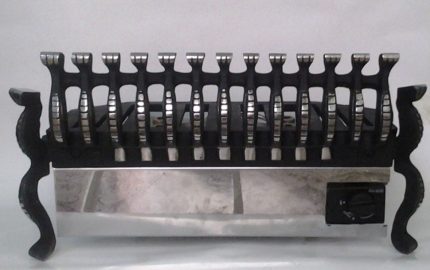
Materials used in the manufacture
The internal equipment of the device is decorated with artificial logs. Doors are made of heat-resistant glass, which allows you to observe the combustion process.
Since the combustion temperature of the gas is approximately 500 ° C, which is lower than the combustion temperature of firewood, the requirements for heat resistance of materials are not so stringent, which positively affects the cost. The glass of the fireplace door can withstand up to 800 ° C.
Operation of the fireplace with cracked glass is prohibited. When the fire goes out, the gas supply stops automatically. The lining of the gas fireplace is made of heat resistant materials. The use of the fireplace without facing is prohibited.
As the material used:
- a rock;
- brick;
- tile;
- tiles, etc.
Opportunities for decorating a gas fireplace are wider than that of a wood counterpart.
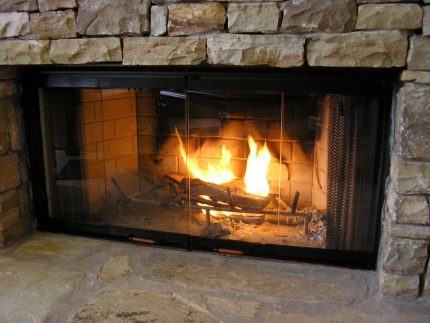
Varieties of gas fireplaces
A gas fireplace is able to warm the room, is a source of "live" fire and lacks the mass of flaws that other models have.
Types of fireplaces:
- wall or built into the wall with a closed firebox;
- island (there is access from all sides);
- with an open firebox (air warms up directly).
Type of fireplace ignition systems:
- gas enters the burner, after which the piezo lighter is automatically turned on;
- after getting into the burner, the gas is ignited by the igniter wick (it burns constantly);
- First of all, the piezo lighter ignites the ignition wick, and after the sensor determines that it is burning, gas is supplied to the burner.
The fireplace can be controlled using a remote control. With its help, it is proposed to set the operating time of the device, increase and decrease the flame, regulate the amount of heat produced, set the temperature at which it will turn off.
A gas fireplace can heat the room and the adjacent rooms. This requires arrangement air heating - Wiring of warm air.
In a well-insulated house with an area of up to 160 m², a gas fireplace can be the main source of heat. In a building with a larger area, it can be used as an additional heating device.
The device of a gas fireplace is advisable where there is a gas distribution network or is arranged heating system based on a gas holder. Using gas cylinders less effective, since their storage requires special equipment, and the cylinders themselves need refueling.
Guaranteed safe operation
Modern equipment is equipped with several automatic security systems. Gas is supplied under constant pressure. The gas supply process is controlled by a special sensor. In the event of a malfunction, the gas supply automatically stops.
Also in the gas fireplace there are atmospheric sensors that check the state of the air in the environment, evaluating the content of carbon dioxide emitted during combustion.
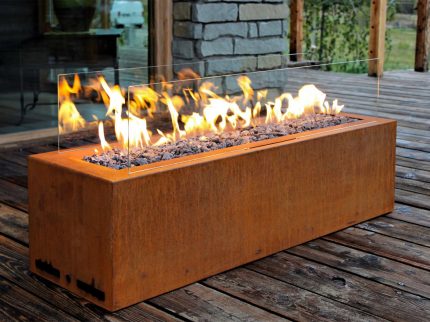
If the norm is exceeded, the gas supply stops. The presence of infrared sensors allows you to monitor the position of the device. If the fireplace has tilted or capsized, the fireplace will stop working.
How to light a gas fireplace?
There are three ways to activate the gas fireplace. For its functionality, you do not need to throw firewood. How to turn on a modern gas fireplace we will describe below.
Step 1: Open gas access to the fireplace, for this:
- find the gas pipe;
- open the gas (turn the knob to the ON position next to the meter);
- when using a gas bottle, find the handle on it and turn it.
Step 2: Turn on the gas in the fireplace:
- find the handle near the appliance (most often it is located under the fireplace);
- if there is no handle, put the switch in the working position (it is located on the wall);
- the switch may also be in the lining of the device.
Some models are equipped with red power buttons.
They are located behind a metal panel or grill. If the fireplace does not light after the first press, try again after 30 seconds. If there is no button, use matches. Before this, make sure that the gas supply is ensured.
Why else can the gas fireplace burner go out?
Having learned how to light a gas fireplace, you should deal with problems that may arise during ignition. The first reason is that the gas supply is shut off. automation, which is installed on all gas heating equipment.
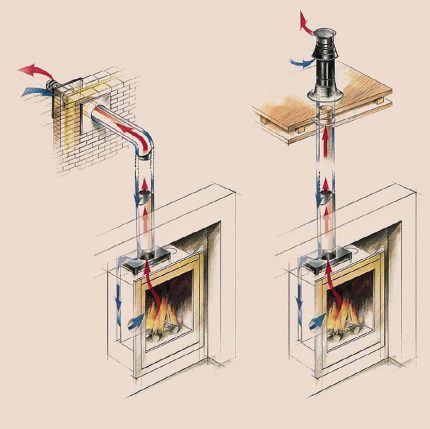
The burner shuts off if:
- insufficient draft in the chimney;
- reducing gas pressure in the pipeline;
- lack of flame in the burner.
As shut-off devices, Italian EuroSIT valves or American-made Honeywell valves are used. Gas shutdown can also occur due to breakdown of the heat generator.
Inadequate draft in the chimney
If a problem arises, it is recommended that you first check the traction. To do this, bring a lit match to the viewing window. If the flame deviates, the draft is normal. If it remains immovable, a problem is detected.
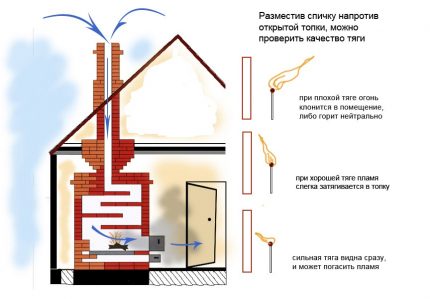
Possible actions:
- Having opened a window, provide a stream of air to the room.
- Check the draft in the chimney. To do this, disconnect the chimney section, which is connected to the outlet of the fireplace. If everything is in order with the draft, you will have to disassemble and clean the unit itself.
- In the absence of draft in the main channel, it is necessary to clear a chimney.
Finally, check the condition of the outer pipe. In summer, a bird's nest could be made on it, and in winter, the cap would freeze.
Gas pressure reduction
If draft is present in the chimney, check the fuel supply. Signs of this problem: the ignitor continues to burn, and the burner has already gone out.
Possible actions:
- Check gas supply. Open a window and disconnect a supply hose from a branch pipe.
- Open the tap. If everything is in order, you will hear a loud hiss and smell the gas.
- In case of poor supply, clean the strainer. If the problem is not resolved, call the gas service.
Turn off the gas before performing any manipulations!
A clogged line can be detected inside the gas meter.This happens mainly after repair work on external pipelines. Self-cleaning in this case is prohibited. You should call the wizard.
Air intake problems
For normal operation of the fireplace, air must enter the room. Strong drafts are undesirable as the burner may go out. To make sure that there is a lack of oxygen, open a window and observe the flame.
Possible reasons:
- air intake is limited by sealed plastic windows;
- powerful cooker hood consumes most of the oxygen;
- the interior doors were replaced, as a result of which the clearance between the sash and the floor was reduced.
Try to provide fresh air. Open the window for ventilation.
Possible malfunctions of a gas fireplace
Over the years of operation, heating equipment may malfunction. Common breakdowns:
- When you try to light a fireplace, the igniter will go out immediately. The reason is the wear of the thermocouple, which heats up from the wick and keeps the gas supply valve open.
- The fireplace does not light at all. The reason is a problem with the contact of the electrical circuit.
- The burner ignites, but is intermittent. The flame is yellow. This indicates a clogging of the main fuel jet.
Self-cleaning the nozzle is not recommended. Repair of all gas fireplaces should be carried out by a specialist. If there is no way out, be sure to shut off the gas, and after repair work, check the joints for leaks with soapy water.
How to independently check the operation of the device?
Depending on the model of equipment and system, there are some of the most common reasons that affect the optimal functioning of the fireplace.
The system is based on a switch. If it fails, it should be replaced. If the pilot is not lit in the system, then you can endlessly click the switch, but the fireplace will not light up. Solution: light the pilot.
It is also the reason: a bad flame sensor. If it fails, the system will not be able to keep the gas valve open.
Decision:
- disconnect the thermocouple from the system;
- measure direct current with a multimeter;
- connect the black wire to the thermocouple button;
- connect the red wire to the copper end of the thermocouple;
- heat the thermocouple with a burner.
Indications on the multimeter will appear after heating the thermocouple. To solve this problem, replace the flame sensor. If the entire system is operational but the valve still does not open, replacement is required.
Conclusions and useful video on the topic
Overview of a gas fireplace and comparing it with other models.
If there are difficulties with the ignition of the fireplace, you can identify the problem and eliminate a minor malfunction yourself. Be sure to turn off the gas supply first. Thus, without unnecessary costs and in the shortest possible time you will return the heat to the house. If a serious equipment malfunction occurs, the repair should be entrusted to a specialist.
Do you have more information on the topic? Share it in the comments. You can also take an active part in the discussion of this issue, express your opinion and tell about personal experience. If necessary, it is proposed to ask a question to a specialist.

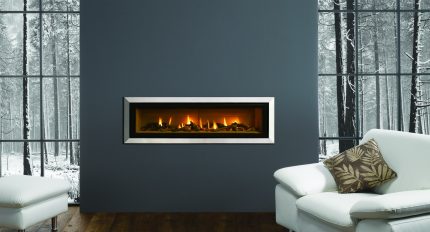
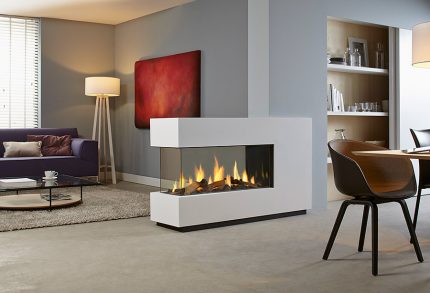

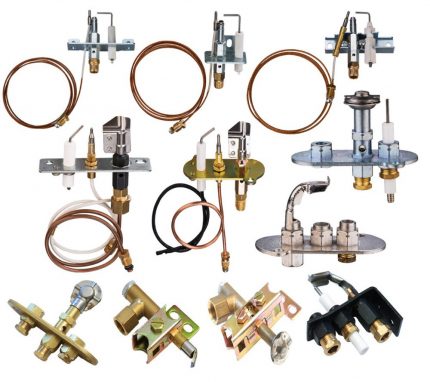
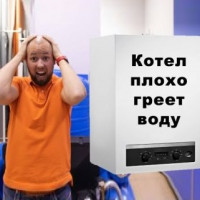 What to do if a gas boiler breaks down and hot water does not turn on? Diagnostic and repair instruction
What to do if a gas boiler breaks down and hot water does not turn on? Diagnostic and repair instruction 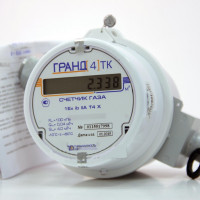 What to do if the gas meter creaks during operation: the main causes of noise and methods for eliminating them
What to do if the gas meter creaks during operation: the main causes of noise and methods for eliminating them 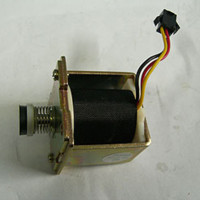 What to do if the gas valve on the gas column does not work: features of diagnostics and repair
What to do if the gas valve on the gas column does not work: features of diagnostics and repair 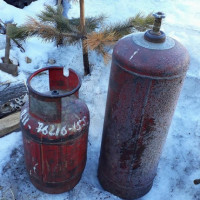 Why is a gas cylinder covered with hoarfrost: causes of freezing of gas in the cylinder and ways to prevent it
Why is a gas cylinder covered with hoarfrost: causes of freezing of gas in the cylinder and ways to prevent it 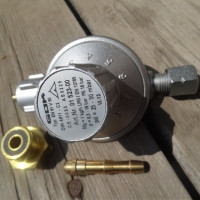 Why the gas cylinder gearbox buzzes: what to do if the gas pressure regulator is noisy
Why the gas cylinder gearbox buzzes: what to do if the gas pressure regulator is noisy 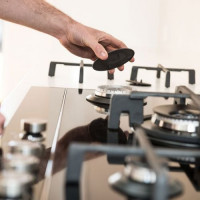 Why the burner does not work on the gas stove: common causes and methods for eliminating them
Why the burner does not work on the gas stove: common causes and methods for eliminating them  How much does it cost to connect gas to a private house: the price of organizing gas supply
How much does it cost to connect gas to a private house: the price of organizing gas supply  The best washing machines with dryer: model rating and customer tips
The best washing machines with dryer: model rating and customer tips  What is the color temperature of light and the nuances of choosing the temperature of the lamps to suit your needs
What is the color temperature of light and the nuances of choosing the temperature of the lamps to suit your needs  Replacement of a geyser in an apartment: replacement paperwork + basic norms and requirements
Replacement of a geyser in an apartment: replacement paperwork + basic norms and requirements